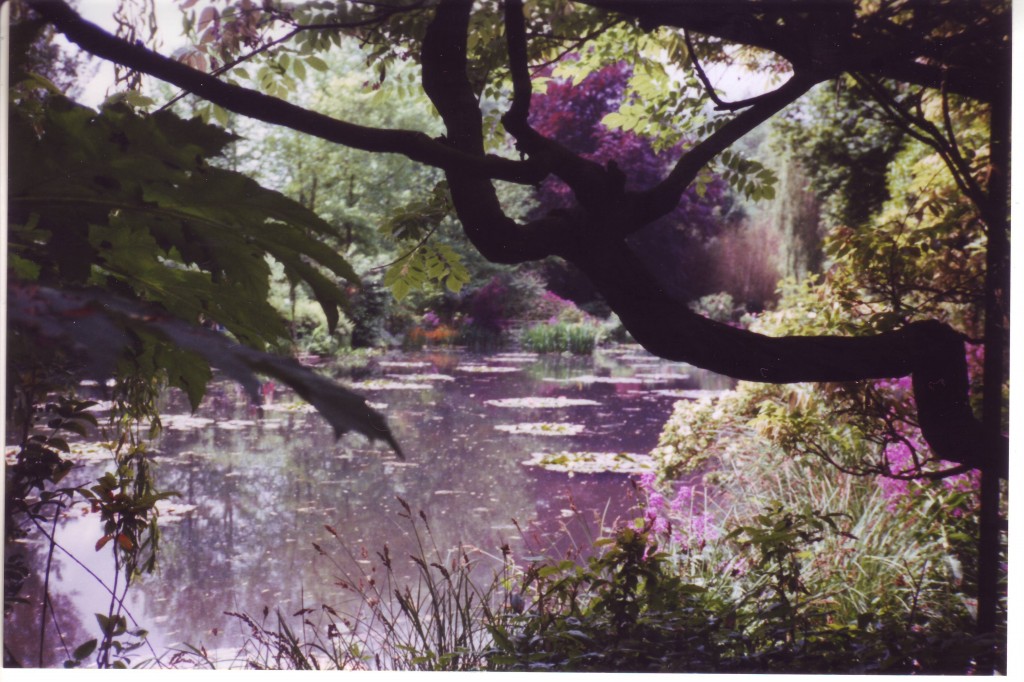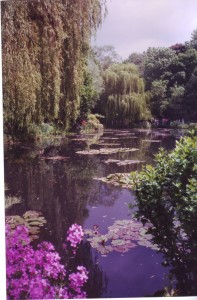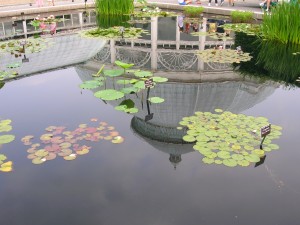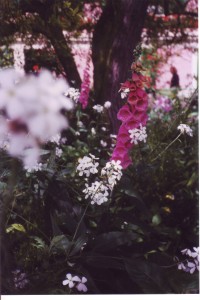Before we left New York City, we finally made it to the New York Botanical Garden. What finally kicked us into gear to make the trip was a special exhibition about Monet’s Garden at Giverny (It closes October 21).
Though Monet can sometimes loom on the edge of a giant Impressionist cliche, I’ve always been a fan. In college, I slept under a comforter covered in one of his famous garden bridge scenes. And during college, my roommate and her mother went to Giverny on a summer trip. “If you get the chance,” she said, “just go.”
I took her advice nearly 5 years later as I traveled in France with friends. We were in Paris for a few days, and I’d spent time in the city before. So one day while they did some city sightseeing, I hopped on a train to Vernon and a bus to Giverny.
Though I’m sure the garden is amazing throughout the growing season, it washed over me in waves of color delight in May, like eating a multi-course artisanal meal. Monet harnessed as much creativity in his garden design as he did as he when spreading those paints across the canvas. I’d always imagined that some of the pinks and purples that worked their way into the water lilies were enhancements, creative license that Monet took in his paintings. But the day I was there, the cloudy sky and the surrounding blooms imbued the water with rosy hues that were factual rather than fictional.
My brain didn’t quite make this leap as I wandered through the garden, but over time I’ve realized that– though I’d never describe him that way first– Monet was a scientist. He experimented with a garden, and his paintings are his lucious lab notebook.
The NYBG does a nice job of recreating his garden and framing Monet as a botanist. It’s a stunning exhibit, and a good proxy of the real thing (Though if you’re in France, as my roommate said, just go!). But the analogy is far broader– he was a creative observer. To top it off, almost any art history discussion of Monet talks about his declining eyesight and the increasing abstraction in his work. He’s a classic example when psychologists talk about color perception. Monet was scientist, observer, case study, and an amazing artist all in one.
All photos are mine taken in May 1999 and May 2012.





